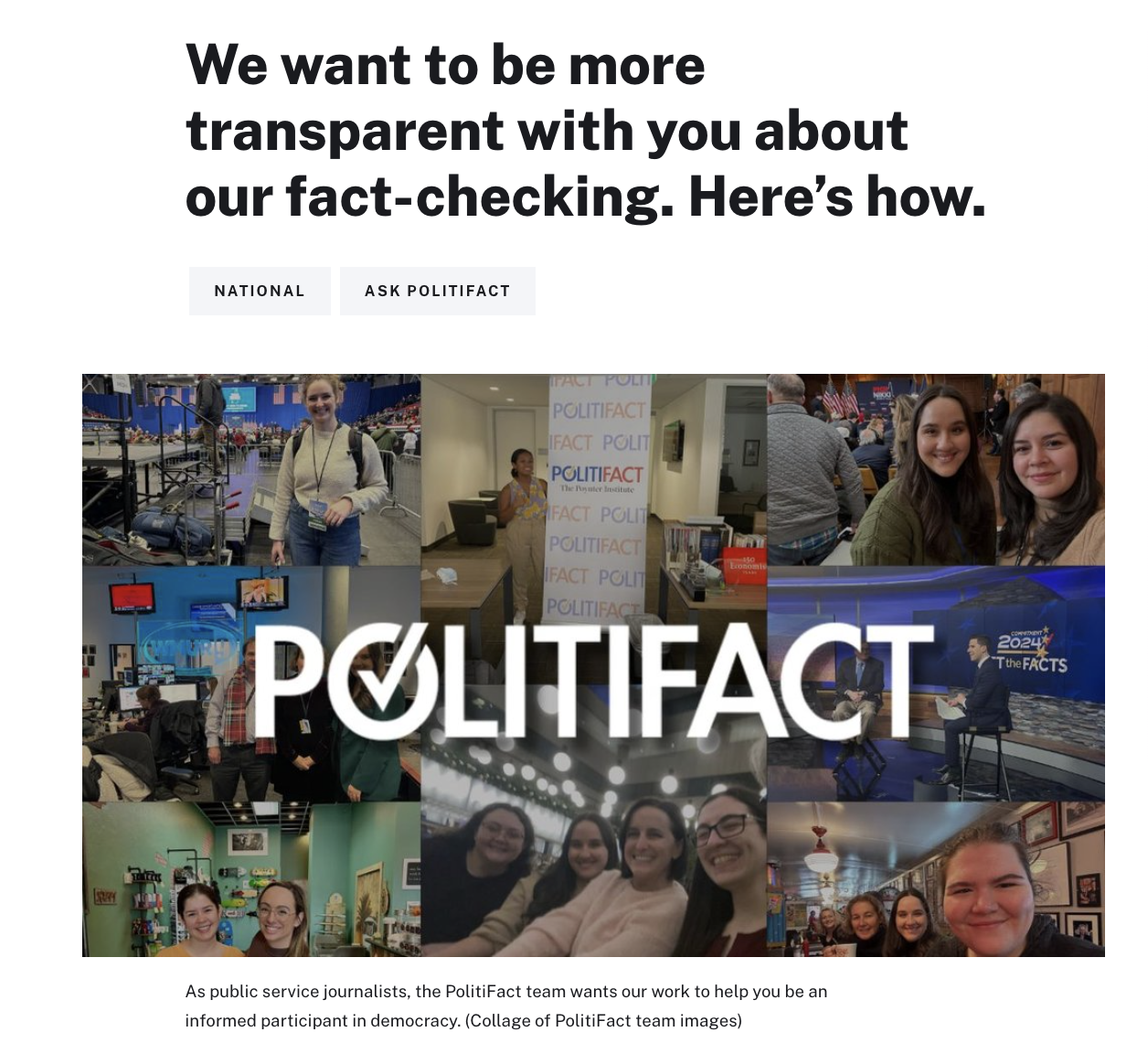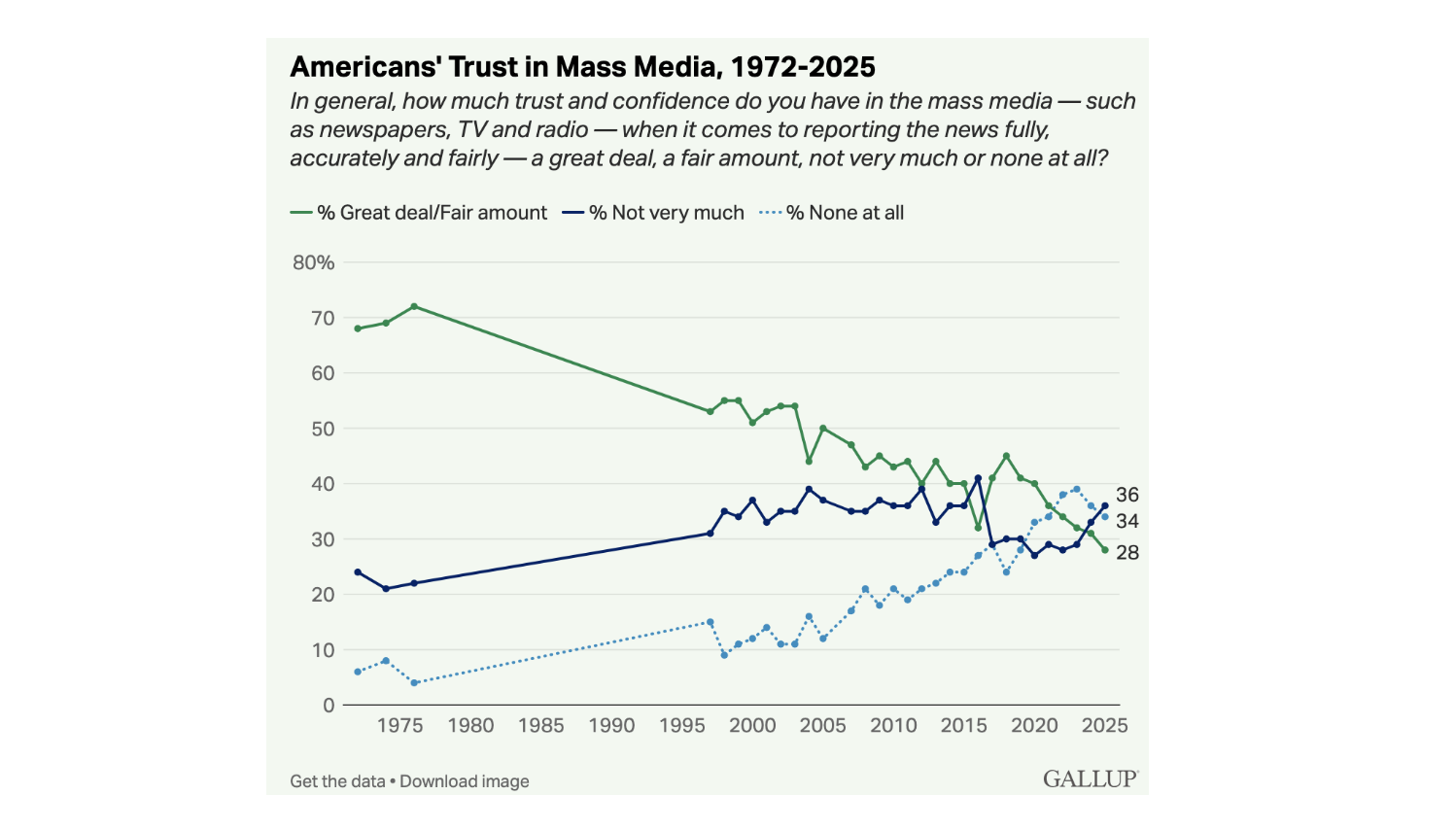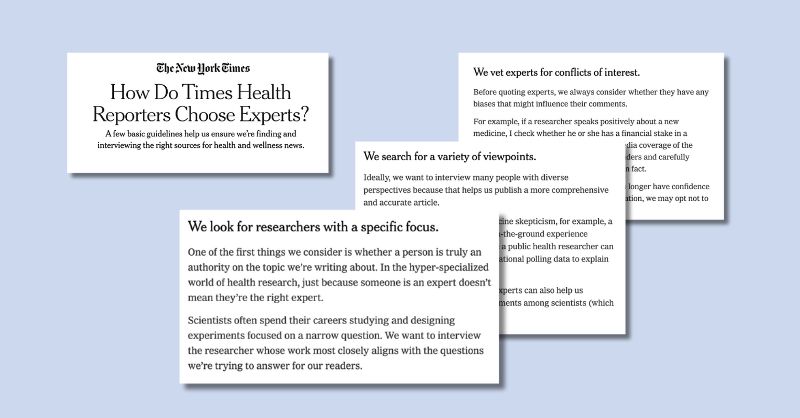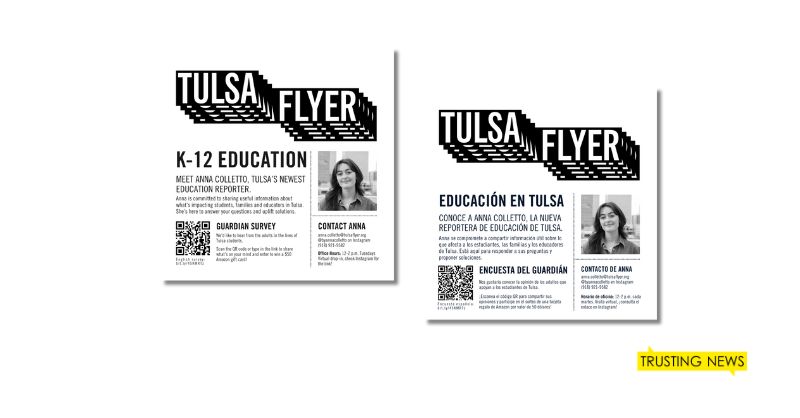
Something we remind newsrooms of often is that the majority of people who interact with your news are likely very casual news consumers who see just a small fraction of the work you do. You may be part of a mission-driven, ethical newsroom that regularly has internal discussions about how to provide fair, accurate coverage. But […]
Copy PolitiFact’s approach to building trust with casual users
Something we remind newsrooms of often is that the majority of people who interact with your news are likely very casual news consumers who see just a small fraction of the work you do.
You may be part of a mission-driven, ethical newsroom that regularly has internal discussions about how to provide fair, accurate coverage. But most people don’t know or assume that.
The reality is that most people stumble upon news coverage unintentionally, and any curiosity (or oftentimes, frustration) around journalism might be piqued while they’re consuming a specific story. And usually, their questions, curiosities or assumptions about how you operate as a journalist are not addressed within the stories themselves.
That’s why we recommend journalists get transparent with their audience within the content and directly on the platforms where people are seeing your news.
Today, we’re highlighting how our longtime newsroom partners at PolitiFact did exactly this.
How PolitiFact inserted transparency into daily coverage
PolitiFact hosted a series of sprints to test — and measure! — which strategies would be most effective when it came to increasing transparency with news consumers who only casually engaged with their content.
The newsroom, based at the Poynter Institute, mostly focused on its Instagram and Facebook audiences (which research shows are audiences that tend to be less engaged and more casual news consumers). The PolitiFact team tested a different trust-building strategy every two weeks and measured the success of each effort using a Net Promoter Score. (We wrote more about how newsrooms can use a Net Promoter Score in a previous experiment with PolitiFact, in which we measured the benefit of adding mission language to donation asks.)
Some of the ways the newsroom inserted transparency into daily coverage included:
- regularly linking to the newsroom’s principles page in comment sections
- creating graphics and videos that explained the newsroom’s coverage and mission
- responding to social comments
- linking to their principles page from fact-checks
After the 100-day experiment wrapped, their team got on the record about it with their audience, explaining specific ways they were trying to be more transparent.
Ellen Hine, audience engagement producer at PolitiFact, shared more about the newsroom’s process and results in this Poynter column. We highly recommend you read through it, especially if you’re interested in replicating this kind of work in your newsroom!

Here are a few of the smart strategies the PolitiFact team used.
They capitalized on high-interest moments. In the column, Ellen points out that the PolitiFact team saw more impact when they paired trust strategies with high-interest stories. As I shared in last week’s newsletter, not only is this when journalists have more eyeballs on their stories, but oftentimes these viral or high-interest moments are people’s only interaction with news content and will greatly shape what they think about your publication and journalists as a whole.
Understandably, these are also stories that elicit more questions or complaints about journalists’ coverage and motivations behind that coverage. That makes it an especially important time to explain any relevant reporting processes or coverage goals. If you want to include transparency in daily coverage but aren’t sure where to start, this Trust Kit walks you through how.
They met news consumers where they were. As Ellen wrote in her Poynter column, “We recognize that if a reader finds PolitiFact’s work on social media or through an internet search, they might not know all of these transparency resources exist.” PolitiFact not only inserted transparency within content, they also made the content easy and quick to consume by creating TikTok videos and Instagram graphics.
With more people avoiding the news, we should be taking advantage of attention wherever and whenever we have it, while also considering how we can make news coverage feel more accessible and less overwhelming to consume. (More resources around news avoidance are here.)
They made it clear they valued feedback. Throughout the entire process, PolitiFact continually showed that they valued hearing from their audience by answering questions and complaints publicly, inviting readers to share their thoughts and publishing content based on what they heard was of interest to their readers.
At Trusting News, we encourage newsrooms to find ways to continually gather feedback about their work and answer questions from their communities. Not only is this a crucial step to providing more reflective coverage of your community, but it can signal that you care about the community’s perspective and values. Simple social media callouts can be an effective way to gather audience input, and we have a list of prompts and language you can copy and use here. For more ideas on how to elicit meaningful feedback, check out our Audience Input Trust Kit.
Newsroom examples: Building trust on social media
For even more examples, browse through our Airtable database of how newsrooms have worked to earn trust on social media.
We’d also love to see examples of how your newsroom has built trust on social media. Feel free to share examples with us here or by responding to this email.
At Trusting News, we learn how people decide what news to trust and turn that knowledge into actionable strategies for journalists. We train and empower journalists to take responsibility for demonstrating credibility and actively earning trust through transparency and engagement. Learn more about our work, vision and team. Subscribe to our Trust Tips newsletter. Follow us on Twitter and LinkedIn.

Project manager Mollie Muchna (she/her) has spent the last 10 years working in audience and engagement journalism in local newsrooms across the Southwest. She lives in Tucson, Arizona, where she is also an adjunct professor at the University of Arizona’s School of Journalism. She can be reached at mollie@trustingnews.org and on Twitter @molliemuchna.



